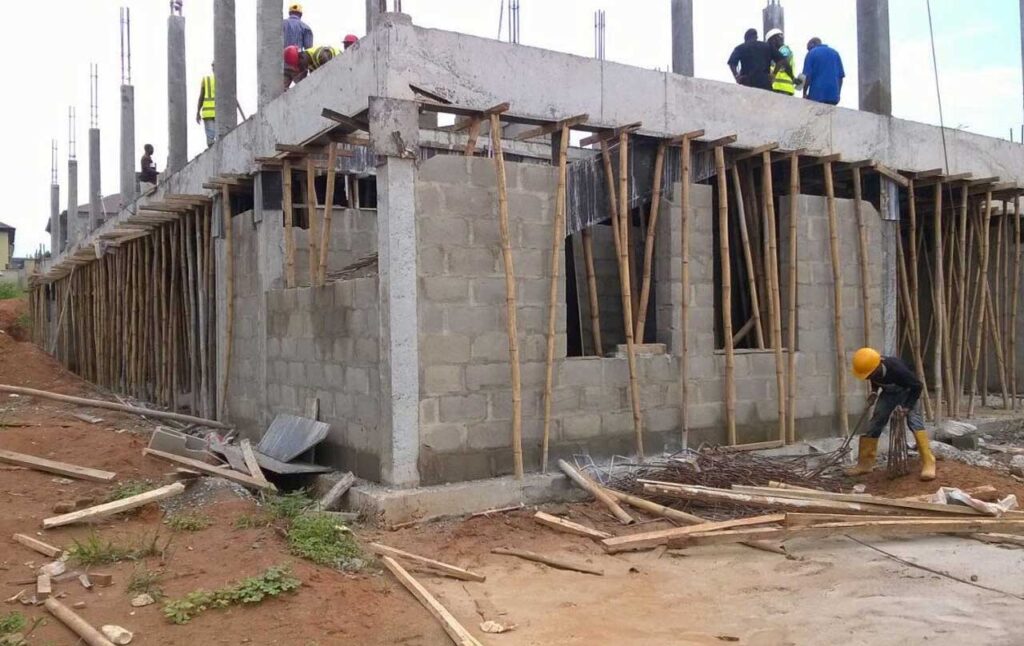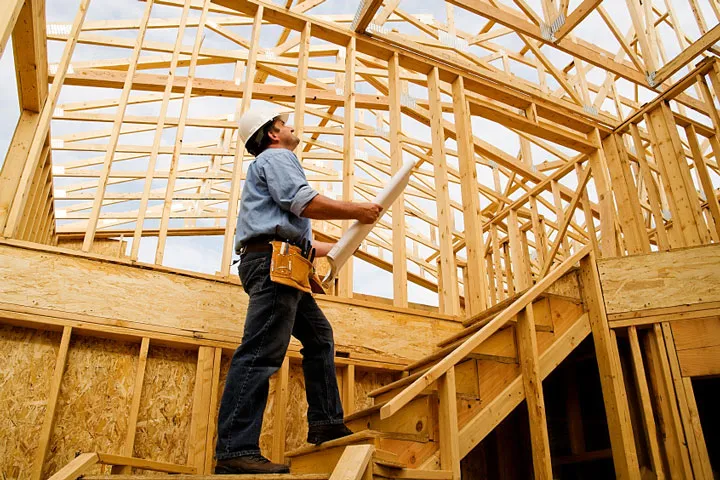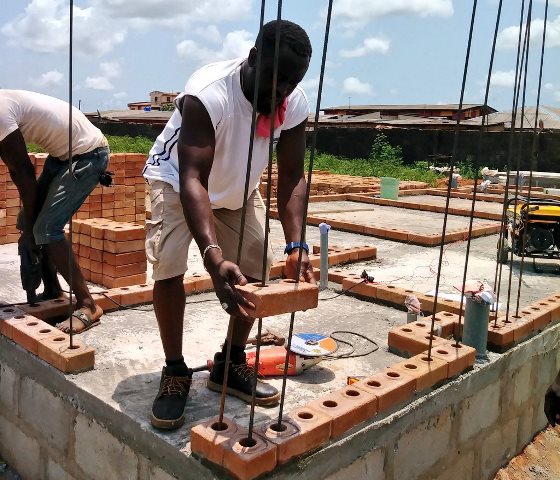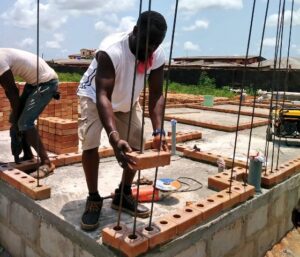Construction is a collective effort involving skilled labourers who turn design concepts into real structures. Professionals like architects, land surveyors, civil engineers, etc., play a crucial role in construction. While these professionals handle the planning and technical aspects, artisans are the real workmen on the job with their specific roles and responsibilities. They work with various professionals, receive instructions from them, and carry out their duties using their skills. In Nigeria, artisans play an important role in this process, using their expertise to build safe, functional, and attractive buildings. Their work is essential at every stage, from laying the foundation to adding the final touches. This is why each construction project requires many people with different skill sets.
Artisans like bricklayers, carpenters, electricians, plumbers, and others have specific roles in ensuring the building is strong, comfortable, and well-finished. Without their expertise, it would be impossible to build houses, offices, or other kinds of buildings.
This article explains the different artisans needed for building construction in Nigeria, their roles, and their responsibilities. By understanding their work, we can see how they contribute to the success of construction projects.

ROLES AND RESPONSIBILITIES OF ARTISANS IN BUILDING CONSTRUCTION IN NIGERIA.
Here is the list of key artisans involved in building construction in Nigeria, along with their duties and responsibilities. These skilled workers are essential to the success of building construction, as they are responsible for the efficient and skilled execution of each stage of the construction process.
1. Carpenters
Carpenters are responsible for constructing formwork for concrete casting, building wooden scaffolding, and installing roofs and other fixtures. They follow architectural plans, sketches, and instruction manuals to ensure the project meets specific design and structural requirements. Carpenters work from blueprints and specifications to ensure that all wooden structures are accurate, functional and meet safety standards.
Roles and Responsibilities:
- Reviews and follows architectural and building plans.
- Build and install wooden frameworks, including doors, windows, and roofing structures.
- Take measurements and calculate the size and amounts of materials needed.
- Cut, shape and smooth wood and other materials according to measurement.
- Construction wood profiles during setting out of building foundation.
2. Bricklayers
The major work of a bricklayer involves laying bricks, stones, and other masonry materials to construct walls, foundations, and other structures. They follow architectural plans and specifications to ensure the correct alignment/specification, pattern, and strength of the structure being built.
Roles and Responsibilities:
- Reading and interpreting construction and architectural plans
- Laying hollow blocks, concrete blocks, and other masonry units.
- Mix and apply mortar to bind materials.
- Ensuring that all structures are aligned, levelled, and structurally sound
- Plastering of walls and other constructed elements.
- Pouring and levelling of concrete in foundation footing and floor slabs.
- Pouring and vibrating concrete in columns and lintels
3. Electricians
An electrician is a skilled professional who specializes in installing, maintaining, and repairing electrical systems in buildings and other structures. They ensure that electrical wiring, fixtures, and equipment are functioning correctly to provide reliable power for various uses.
Roles and Responsibilities
- Read and interpret architectural plans and electrical drawings to plan and execute electrical installations and repairs accurately.
- Install, repair, and maintain electrical wiring, circuits, switches and fixtures following electrical codes, regulations, and safety standards.
- Test electrical systems and components for proper operation, voltage, current, and resistance, using multimeters, voltage testers, and other diagnostic tools.
4. Plumbers
A plumber on a construction site is responsible for installing, maintaining, and repairing plumbing systems, including water supply lines, drainage systems, and sewage systems. They ensure that pipes, fixtures, and fittings are properly installed and connected according to building codes and plans, ensuring the effective flow of water and waste throughout the structure.
Roles and Responsibilities:
- Reading and understanding architectural working plans to install the necessary plumbing infrastructure.
- Locate and repair issues with water supply lines (e.g. leaks).
- Repair or replace broken drainage lines, clogged drains, faucets etc.
- Install fixtures such as sinks, toilets, and water heaters.
5. Iron Benders
The major work of an iron bender on a construction site involves bending, shaping, and cutting steel reinforcement bars (rebar) according to project specifications. They prepare the rebar for concrete reinforcement, ensuring the correct sizes and shapes for foundations, beams, columns, and other structural components to provide strength and stability to the building.
Roles and Responsibilities
- Reading and interpreting building and engineering plans and drawings.
- Setting out work areas and determining the required materials.
- Laying out steel bars, mesh, rods, and frameworks
- Cut, bend and install steel reinforcements for concrete structures.
6. Painters
On a construction site, a painter plays an important role in the final stages of a building construction project by applying coatings to surfaces for both aesthetic and protective purposes. Their responsibilities can vary depending on the specific project. A painter’s work enhances the building’s visual appeal and durability, contributing to the overall quality of the construction project.
Roles and Responsibilities:
- Surface Preparation: Clean, sand, prime, and repair surfaces to ensure the paint adheres well and lasts longer.
- Painting: Apply paints, stains, varnishes, or sealants using brushes, rollers, or sprayers on various surfaces.
- Finishing Touches: Apply additional layers or finishes like gloss, matte, or textured effects.
- Safety Compliance: Use protective gear and ensure proper ventilation while handling paints and solvents.
- Collaboration: Work with other construction professionals to complete painting after other trades finish their work.
7. Tilers
A Tiler on a construction site is responsible for installing tiles on various surfaces, including floors, walls, and ceilings, to enhance the aesthetic and functional qualities of a building. They are to ensure that the tiles are cut and installed to precise specifications and that they meet quality standards.
Roles and Responsibilities
- Clean and level surfaces to ensure proper tile adhesion.
- Accurately measure areas and plan tile layouts for symmetry and alignment.
- Use tools to cut tiles for edges, corners, and around obstacles like pipes or outlets.
- Mix and evenly apply tile adhesive using a notched trowel.
- Place tiles onto the adhesive, ensuring alignment and consistent spacing.
- Fill gaps between tiles with grout after the adhesive has set.
8. Ceiling Installers
A ceiling installer, also known as a drywall installer or ceiling fitter, is responsible for installing various types of ceilings, including drywall (gypsum board), suspended (drop) ceilings, and other ceiling systems on a construction site. Their role ensures the structural integrity and aesthetic finish of the ceiling, which is essential for both functional and decorative purposes.
Roles and Responsibilities
- Reading and interpreting architectural plans and job specifications to understand the layout and materials required.
- Measure and mark the ceiling area to be covered.
- Fit and install plasterboard and other ceiling materials
- Fit acoustic and fireproofing materials.
- Repair damaged ceilings as needed.
9. Labourers
A labourer on a construction site performs various tasks that support the overall construction process. They work under the supervision of skilled tradespeople or foremen, performing physical labour and assisting with various manual tasks that are crucial for keeping the project moving forward. While their tasks can vary depending on the type of project.
Roles and Responsibilities:
- Carrying and Moving Materials: Transport construction materials like bricks, concrete, wood, and tools across the site.
- Loading and Unloading: Assist with unloading deliveries and organize materials for easy access.
- Organizing Supplies: Keep materials organized for efficiency and safety.
- Clearing the Site: Remove debris, rocks, and vegetation before construction starts.
- Digging and Excavation: Help dig trenches, holes, or foundations, and backfill or level the ground.
- Supporting Tradespeople: Aid carpenters, plumbers, electricians, and masons by passing materials or tools.
- Helping with Installations: In some cases, labourers assist with installing drywall, insulation, or roofing materials.
- Site Cleanup: Maintain a clean site by removing waste, cleaning spills, and disposing of hazardous materials.
- Tool and Equipment Maintenance: Clean and maintain tools and equipment for the next construction.

Conclusion
The roles and responsibilities of artisans are the backbone of building construction in Nigeria, playing critical roles in turning architectural plans into reality. Their expertise ensures that structures are functional, safe, and visually appealing. Each artisan, from bricklayers to tilers, contributes unique skills vital to the success of every construction project. Understanding the roles and responsibilities of artisans highlights their importance in achieving quality results, making them indispensable in the construction process.




